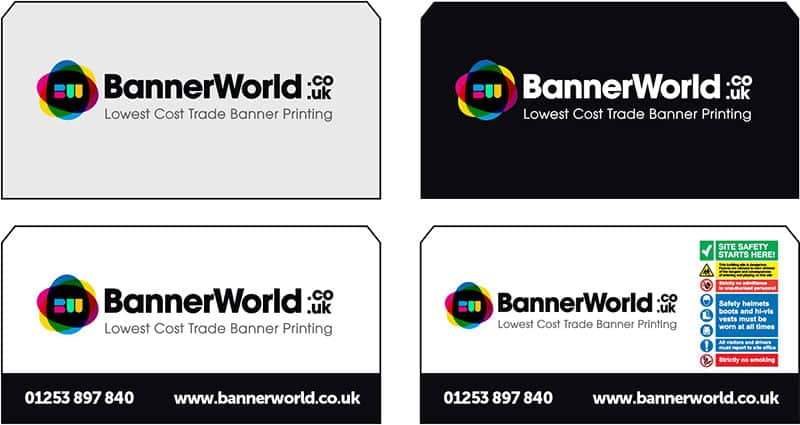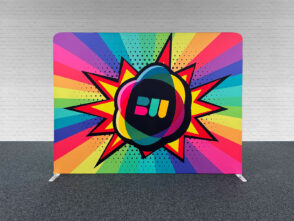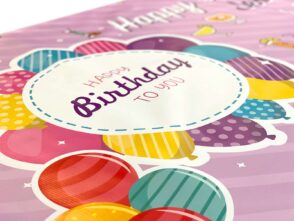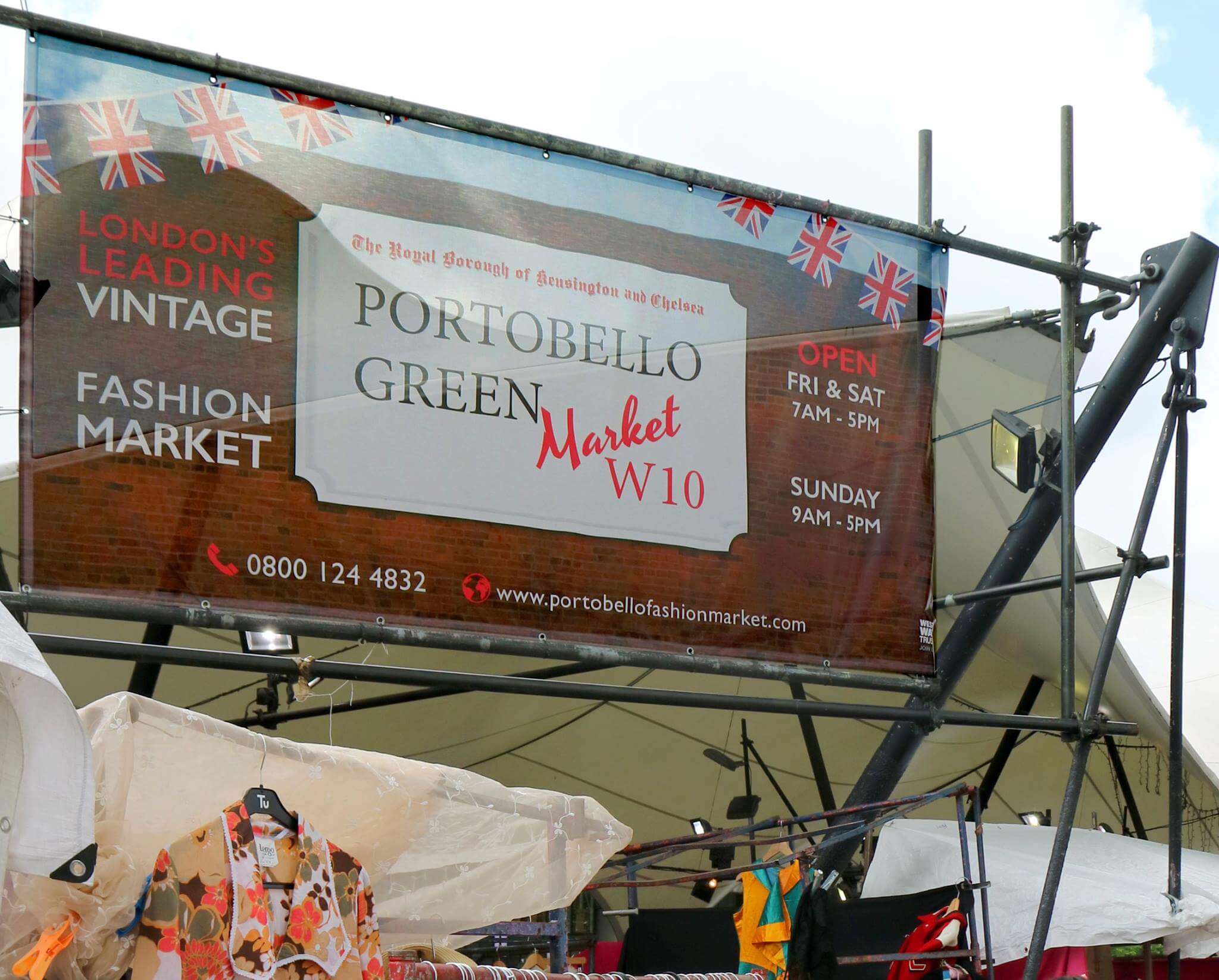Fence cover ideas to make the biggest impact
We offer a wide range of mesh fencing solutions, including mesh barrier fencing, also referred to by the brand name Heras or Heras fence covers. In this article, we look at why you need Heras fencing covers, which materials are the best and how to design impactful artwork with some useful design tips.
What is a Heras fence cover?
Heras is the most well-known brand name for temporary fencing. Temporary fencing is a solution for fencing off the boundary of building sites and is also used as a fencing solution at outdoor events, including festivals.
Why do I need Heras fencing?
It’s now a legal requirement in the UK for building and construction sites to have temporary fencing, meaning branding the boundary using Heras fencing covers is a very popular branding solution. Safety on a building site is very important, so ensuring your site is fenced off correctly is a legal requirement. Its main requirement is to make the site inaccessible to the general public and prevent vandalism. Installing a temporary fencing solution is fast and cost-effective and is preferred over traditional wood and plywood hoarding due to a lower outlay and speed of construction.
Advantages of Mesh construction fencing
Branded mesh barrier fencing covers are a valuable advertising and brand awareness opportunity. Adding your brand to your site perimeter fence creates awareness of your project, creating sales leads.
Another advantage of using branded site netting over the temporary Heras fencing is printing health and safety site information directly onto the material. The benefit of adding H&S information onto the mesh fencing cover is minimal clutter from small Health and safety signs giving your site a clean and modern look.
Fence coverings for privacy
Heras fence covers are useful for adding privacy to your building site. Using fence coverings for privacy keeps prying eyes away from your site, reducing the chances of theft.
How do you print Heras fence covers?
We print Heras fence covers using modern printing methods. We offer x3 types of material and two printing processes. Our most popular premium Heras fence cover is printed using a Dye sublimation process.
Premium Heras fence covers
Our premium Heras fencing covers use a cloth fabric mesh rather than a PVC-based mesh material. The cloth fabric is beneficial, making these Heras fence covers lightweight, foldable, easy to store, and machine mashable.
Standard Heras fencing covers
Our standard Heras fencing covers use a low-cost PVC mesh material. Our standard PVC mesh fencing covers are the lowest-cost product in the UK, making them very affordable for anyone wanting branding fence covers on a budget.
Airmesh PVC Heras fence covers
Our Airmesh Heras fence covers use a specialist Airmesh material. The larger holes in the airmesh offer greater air permeability properties. Air mesh Heras fence covers are the best on the market if you require a greater degree of airflow and are used in locations that can be affected by adverse weather conditions.
Fencing cover ideas and design tips
Make your design big and bold
Remember your viewing distance. A big and bold artwork creates more impact and will stand out at a greater distance. Using small text and detailed artwork will be difficult to see at a distance. However, big and bold is a general rule, with exceptions. Some Heras fence covers are viewed up close at events and festivals so you can be more creative. Feel free to add more detail to your designs if your viewing distance is closer.
Use bright and contrasting colours
Using bright and contrasting colours will give your branded fence covers more visual impact. As all of our branded fence covers are manufactured from mesh, colours will always appear paler due to the air holes. Try using Blacks and high-impact primary colours. Avoid using pale and pastel colours, as these will look even lighter once printed on the mesh material. Using contrasting colours will give more contrast and more depth to your designs.
Avoid using white as a background colour
You should avoid using white as a background colour. Because your fence cover is used in an outdoor construction environment, a predominantly white cover will quickly become dirty and grubby. If your logo is, for example, black, it’s an idea to make the background of the cover black and have the logo white. If changing your logo’s colour is impossible, you could change the background colour to a light grey or similar. Changing to an off-white colour will make your covers look less dirty.
You could also have an info band along the bottom if you require the background to remain white. Placing phone numbers and contact details within a black or coloured band along the bottom of your Heras fence banners is an idea. Using a coloured band also adds contrast to your design and adds a visual ‘break’ to the design.

Design Heras fencing covers online
We offer a free online design service for Heras Fence coverings. You can add text, upload logos and images and add clip art and a range of health and safety information. Our Heras fence designer is easy to use, meaning you can design a Heras fence cover in minutes.
Add health and safety information to your fencing
Heras fencing covers offer the perfect opportunity to add Health and safety information to your site, reducing the need for extra signage. You can incorporate any health and safety artwork into your design.
Add CGI images to your Heras fence design
Because we print full-colour Heras fencing covers at photographic quality, you can add photos to your designs. Most architects nowadays use CGI or computer-generated imagery when proposing a new development. We’ve had clients send through artwork with each panel showing a different site rendering on each Heras panel showcasing the upcoming development.
Keep it simple
And finally, keep it simple. Remember that less is more. When designing artwork for Barrier mesh fencing, please keep it simple. Tell them who you are, what you do and how they can get hold of you.


















Leave a Reply
You must be logged in to post a comment.